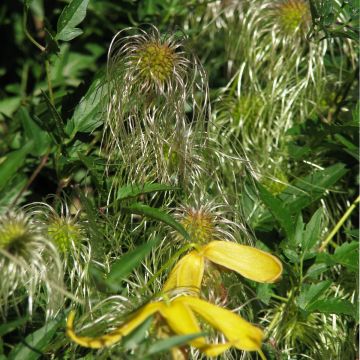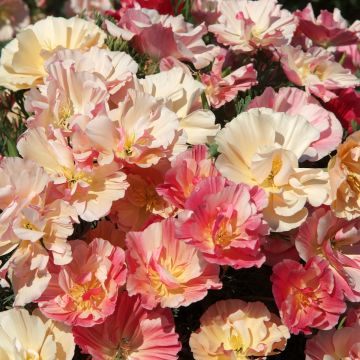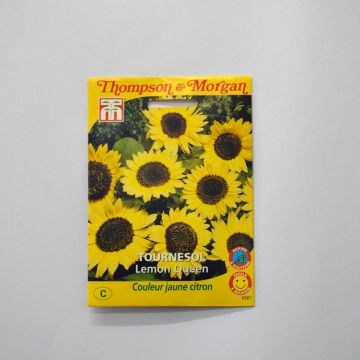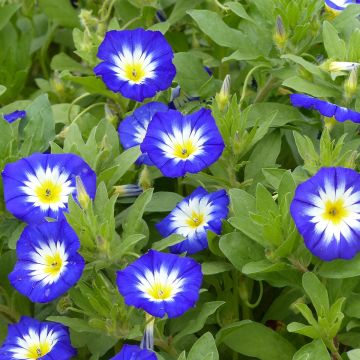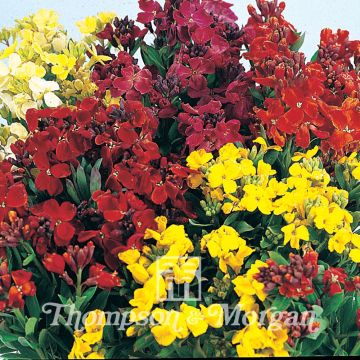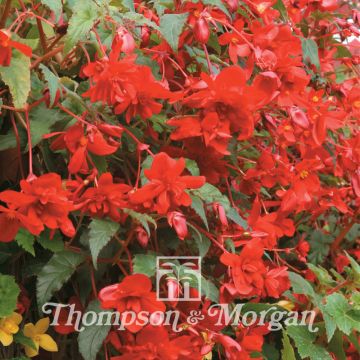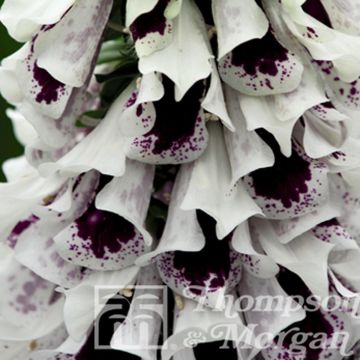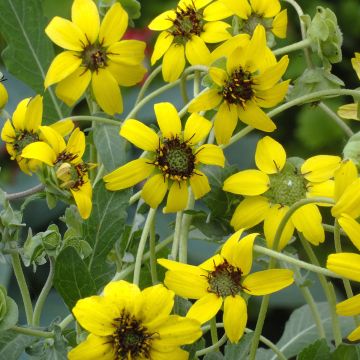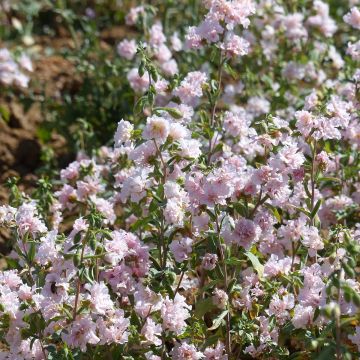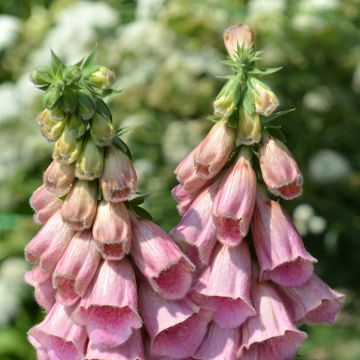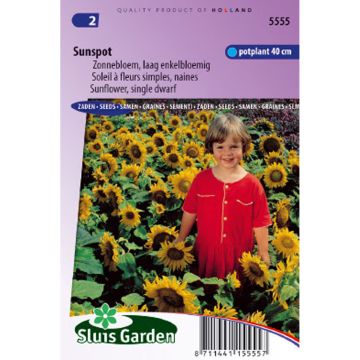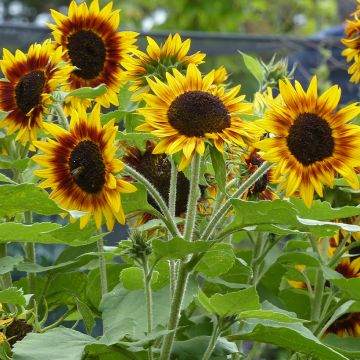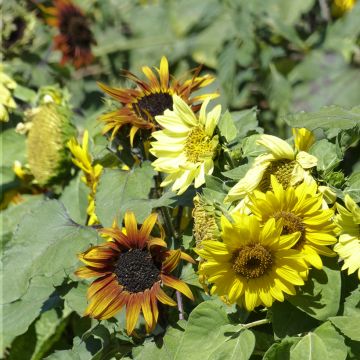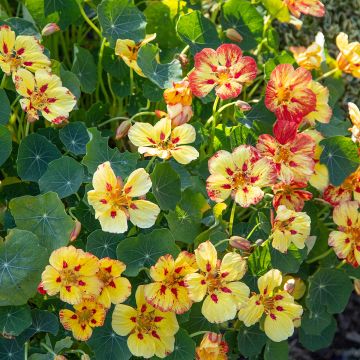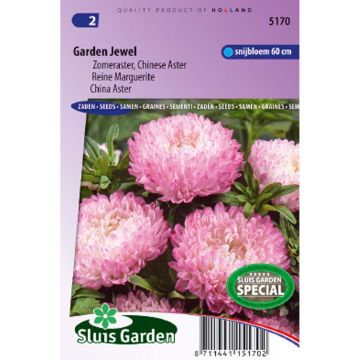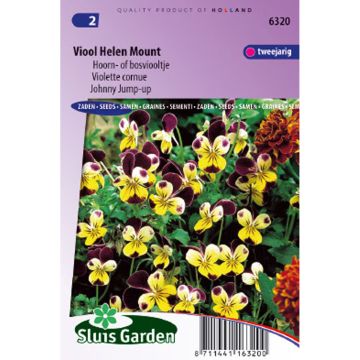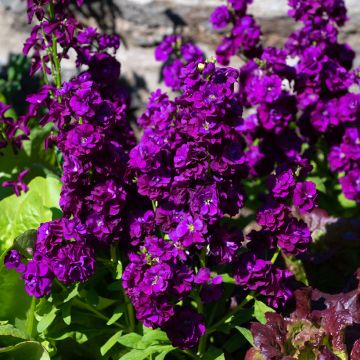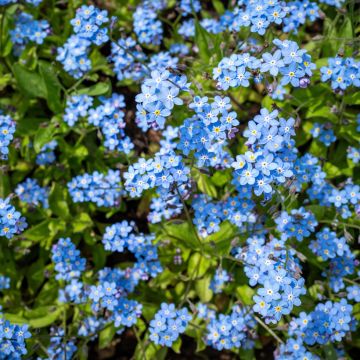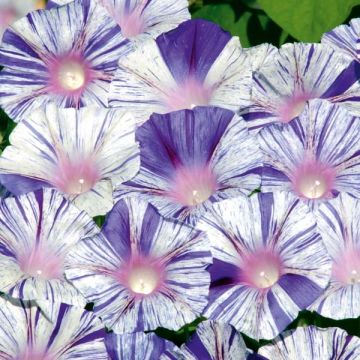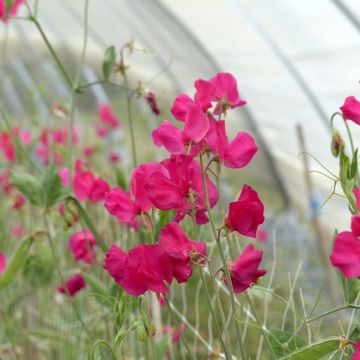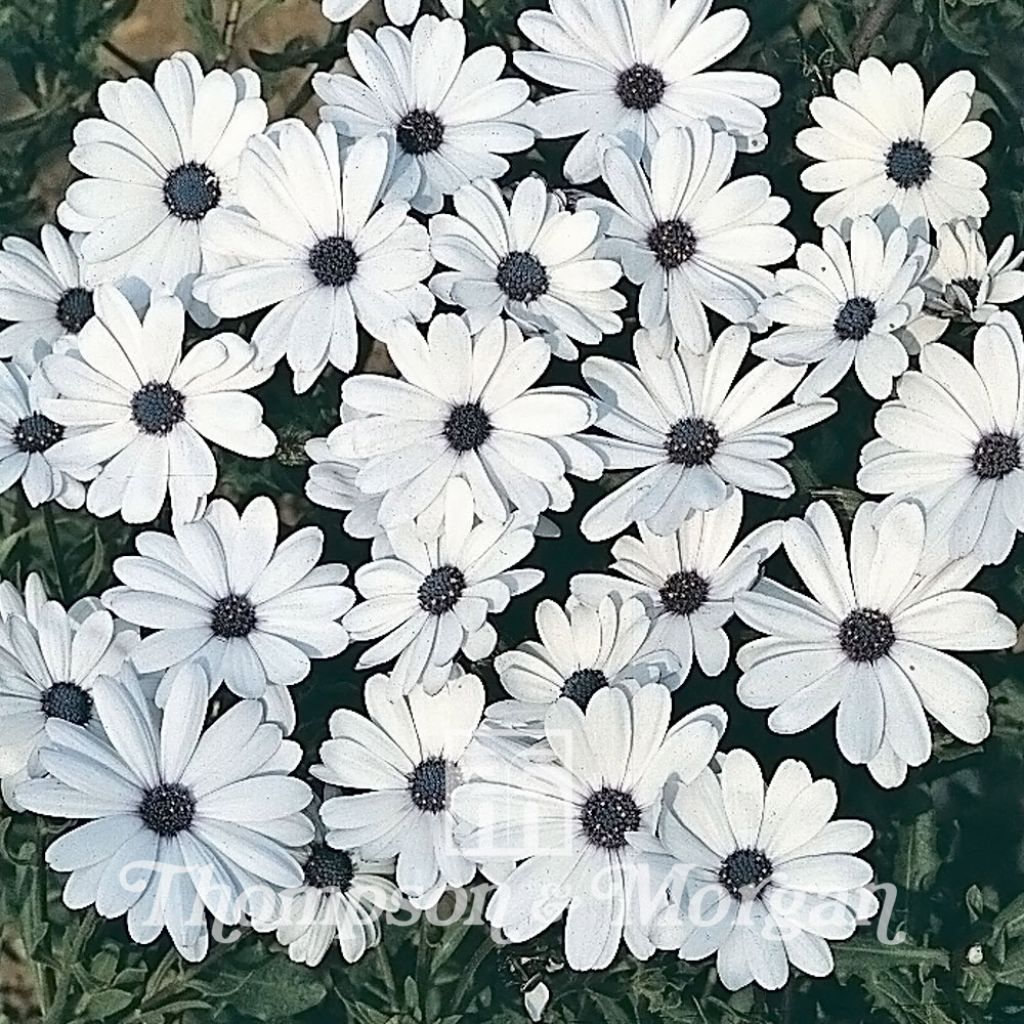

Osteospermum Cape Daisy Glistening White
Osteospermum Glistening White - Cape Daisy
Osteospermum x hybrida Glistening White
Cape Daisy, Blue-eyed Daisy, African Daisy
The planted seeds sprouted almost simultaneously within the span of a short week. I am waiting for the sunny days to transplant the seedlings into the ground :) and I hope to see beautiful flowers this summer!
Tatsiana, 05/03/2019
This item cannot be shipped to the selected country
Dispatch by letter from €3.90
Delivery to Corse prohibited
More information
Schedule delivery date,
and select date in basket
This plant carries a 6 months recovery warranty
More information
We guarantee the quality of our plants for a full growing cycle, and will replace at our expense any plant that fails to recover under normal climatic and planting conditions.
Seed-only orders are dispatched by sealed envelope. The delivery charge for seed-only orders is €3.90.
Delivery to Corse prohibited: UE law prohibits the import of this plant from mainland France to Corse as part of the fight against Xylella fastidiosa. Please accept our sincere apologies.
More information

Does this plant fit my garden?
Set up your Plantfit profile →
Description
Osteospermum Cape Daisy Glistening White is a bright perennial with the appearance of a white daisy with a dark blue centre surrounded by yellow. While not hardy, it is tolerant to drought or poor soil and requires very little care.
Osteospermum, also known as Cape daisies or African daisies, are perennial asters grown as annuals in temperate climates. Not very hardy, they are particularly sensitive to temperatures below -5°C (23°F), especially if there are repeated frosts. However, with mild winters, especially near the coast, their beautiful dark green foliage can be enjoyed throughout the winter. Osteospermum offer an impressive range of colours. Osteospermum Cape Daisy Glistening White is a white variety with long very bright florets and a satin-like texture, with the central disc adorned with indigo blue to bluish black surrounded by amber yellow. This perennial produces a profusion of solitary flowers measuring 5 to 6 cm (2in) in diameter and reaching a height of 50 cm (20in).
It grows in sandy South African soils, along steep slopes or at the base of cliffs. From its natural habitat, it has retained its preference for well-drained, poor soils and full sun. With its long flowering period from June to October, it is appreciated by infrequent gardeners. During dry periods, this beautiful and very modest daisy will simply require a little water to flourish again. To encourage flowering, simply remove faded flowers.
Osteospermum varieties complement each other perfectly to create a colourful ballet. The coppery tones of the 'Terracotta' variety or the pastel purple hues of the 'Spring Bouquet' cultivar will enhance the whites of the 'Glistening White'. They are so nectar-rich that even butterflies never tire of them. Highly noticeable in hanging baskets or pots that are easy to store in winter, they make generous displays.
If, by chance, you need to water them during a very hot and dry summer, avoid wetting their foliage. You may risk the appearance of powdery mildew. With this precaution taken, they are very resistant to diseases.
Report an error about the product description
Flowering
Foliage
Plant habit
Botanical data
Osteospermum
x hybrida
Glistening White
Asteraceae
Cape Daisy, Blue-eyed Daisy, African Daisy
South Africa
Other Thompson and Morgan seeds
Planting and care
Sow in early spring from March to April in a good seed compost and lightly press them down, as light is needed for germination. The substrate should remain moist without excess. You will have to wait between 10 to 15 days to see the young shoots appear if you have taken care to keep the seeds at a room temperature between 15 and 18°C (59 and 64.4°F).
When the seedlings are strong enough to be handled, repot them in larger buckets to gradually acclimatise them to outdoor temperatures for about ten days. When all risk of frost is gone, transplant the shoots to a very sunny and well-drained location, making sure to space them at least 40 cm (16in) apart.
If by any chance you have to water your Osteospermum during a very hot and dry summer, do not wet its foliage. You risk seeing powdery mildew appear. With this precaution taken, it is very resistant to diseases.
Sowing period
Intended location
-
, onOrder confirmed
Reply from on Promesse de fleurs
Flower seeds
Haven't found what you were looking for?
Hardiness is the lowest winter temperature a plant can endure without suffering serious damage or even dying. However, hardiness is affected by location (a sheltered area, such as a patio), protection (winter cover) and soil type (hardiness is improved by well-drained soil).

Photo Sharing Terms & Conditions
In order to encourage gardeners to interact and share their experiences, Promesse de fleurs offers various media enabling content to be uploaded onto its Site - in particular via the ‘Photo sharing’ module.
The User agrees to refrain from:
- Posting any content that is illegal, prejudicial, insulting, racist, inciteful to hatred, revisionist, contrary to public decency, that infringes on privacy or on the privacy rights of third parties, in particular the publicity rights of persons and goods, intellectual property rights, or the right to privacy.
- Submitting content on behalf of a third party;
- Impersonate the identity of a third party and/or publish any personal information about a third party;
In general, the User undertakes to refrain from any unethical behaviour.
All Content (in particular text, comments, files, images, photos, videos, creative works, etc.), which may be subject to property or intellectual property rights, image or other private rights, shall remain the property of the User, subject to the limited rights granted by the terms of the licence granted by Promesse de fleurs as stated below. Users are at liberty to publish or not to publish such Content on the Site, notably via the ‘Photo Sharing’ facility, and accept that this Content shall be made public and freely accessible, notably on the Internet.
Users further acknowledge, undertake to have ,and guarantee that they hold all necessary rights and permissions to publish such material on the Site, in particular with regard to the legislation in force pertaining to any privacy, property, intellectual property, image, or contractual rights, or rights of any other nature. By publishing such Content on the Site, Users acknowledge accepting full liability as publishers of the Content within the meaning of the law, and grant Promesse de fleurs, free of charge, an inclusive, worldwide licence for the said Content for the entire duration of its publication, including all reproduction, representation, up/downloading, displaying, performing, transmission, and storage rights.
Users also grant permission for their name to be linked to the Content and accept that this link may not always be made available.
By engaging in posting material, Users consent to their Content becoming automatically accessible on the Internet, in particular on other sites and/or blogs and/or web pages of the Promesse de fleurs site, including in particular social pages and the Promesse de fleurs catalogue.
Users may secure the removal of entrusted content free of charge by issuing a simple request via our contact form.
The flowering period indicated on our website applies to countries and regions located in USDA zone 8 (France, the United Kingdom, Ireland, the Netherlands, etc.)
It will vary according to where you live:
- In zones 9 to 10 (Italy, Spain, Greece, etc.), flowering will occur about 2 to 4 weeks earlier.
- In zones 6 to 7 (Germany, Poland, Slovenia, and lower mountainous regions), flowering will be delayed by 2 to 3 weeks.
- In zone 5 (Central Europe, Scandinavia), blooming will be delayed by 3 to 5 weeks.
In temperate climates, pruning of spring-flowering shrubs (forsythia, spireas, etc.) should be done just after flowering.
Pruning of summer-flowering shrubs (Indian Lilac, Perovskia, etc.) can be done in winter or spring.
In cold regions as well as with frost-sensitive plants, avoid pruning too early when severe frosts may still occur.
The planting period indicated on our website applies to countries and regions located in USDA zone 8 (France, United Kingdom, Ireland, Netherlands).
It will vary according to where you live:
- In Mediterranean zones (Marseille, Madrid, Milan, etc.), autumn and winter are the best planting periods.
- In continental zones (Strasbourg, Munich, Vienna, etc.), delay planting by 2 to 3 weeks in spring and bring it forward by 2 to 4 weeks in autumn.
- In mountainous regions (the Alps, Pyrenees, Carpathians, etc.), it is best to plant in late spring (May-June) or late summer (August-September).
The harvesting period indicated on our website applies to countries and regions in USDA zone 8 (France, England, Ireland, the Netherlands).
In colder areas (Scandinavia, Poland, Austria...) fruit and vegetable harvests are likely to be delayed by 3-4 weeks.
In warmer areas (Italy, Spain, Greece, etc.), harvesting will probably take place earlier, depending on weather conditions.
The sowing periods indicated on our website apply to countries and regions within USDA Zone 8 (France, UK, Ireland, Netherlands).
In colder areas (Scandinavia, Poland, Austria...), delay any outdoor sowing by 3-4 weeks, or sow under glass.
In warmer climes (Italy, Spain, Greece, etc.), bring outdoor sowing forward by a few weeks.

































